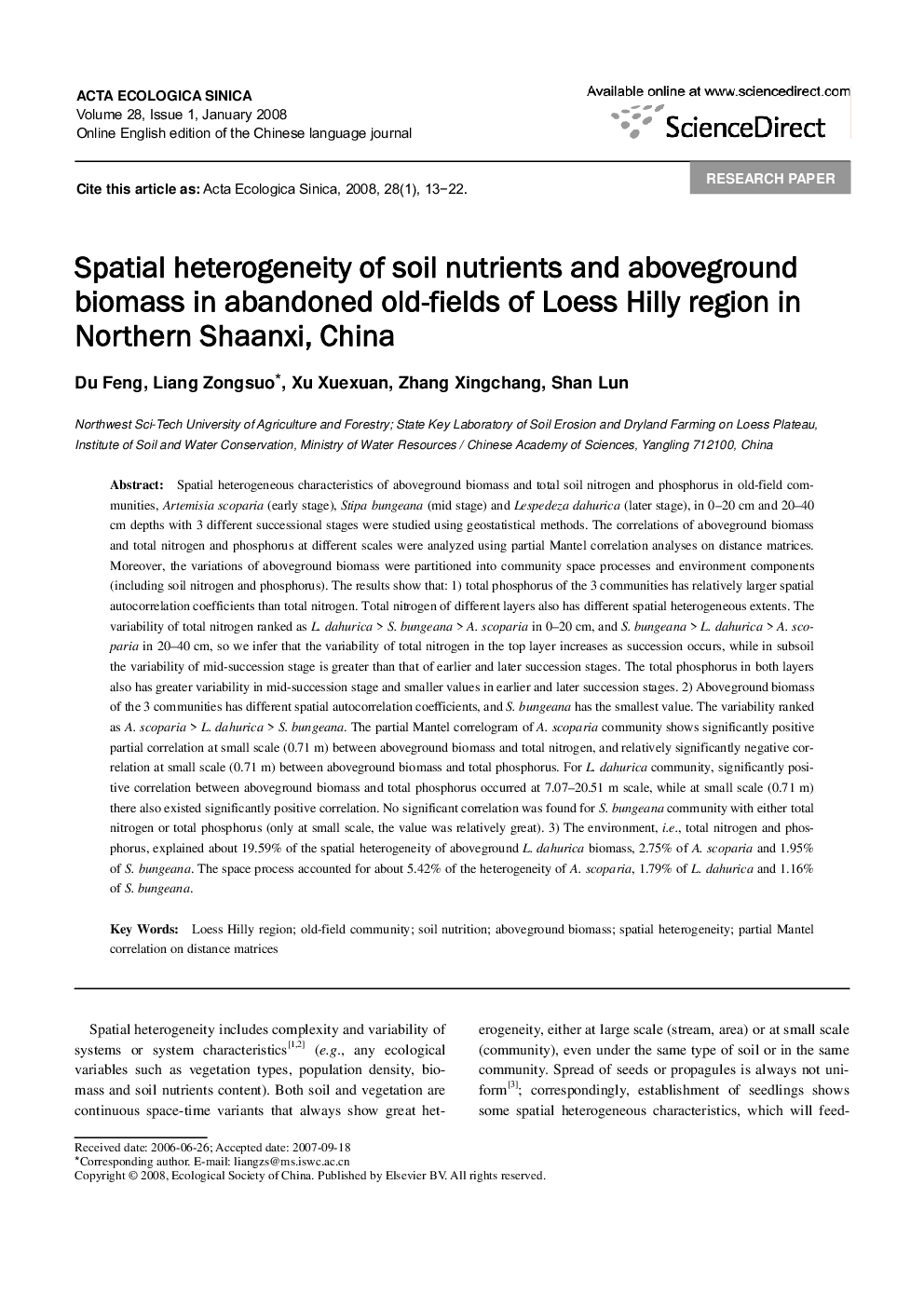| کد مقاله | کد نشریه | سال انتشار | مقاله انگلیسی | نسخه تمام متن |
|---|---|---|---|---|
| 4380344 | 1303987 | 2008 | 10 صفحه PDF | دانلود رایگان |

Spatial heterogeneous characteristics of aboveground biomass and total soil nitrogen and phosphorus in old-field communities, Artemisia scoparia (early stage), Stipa bungeana (mid stage) and Lespedeza dahurica (later stage), in 0–20 cm and 20–40 cm depths with 3 different successional stages were studied using geostatistical methods. The correlations of aboveground biomass and total nitrogen and phosphorus at different scales were analyzed using partial Mantel correlation analyses on distance matrices. Moreover, the variations of aboveground biomass were partitioned into community space processes and environment components (including soil nitrogen and phosphorus). The results show that: 1) total phosphorus of the 3 communities has relatively larger spatial autocorrelation coefficients than total nitrogen. Total nitrogen of different layers also has different spatial heterogeneous extents. The variability of total nitrogen ranked as L. dahurica > S. bungeana > A. scoparia in 0–20 cm, and S. bungeana > L. dahurica > A. scoparia in 20–40 cm, so we infer that the variability of total nitrogen in the top layer increases as succession occurs, while in subsoil the variability of mid-succession stage is greater than that of earlier and later succession stages. The total phosphorus in both layers also has greater variability in mid-succession stage and smaller values in earlier and later succession stages. 2) Aboveground biomass of the 3 communities has different spatial autocorrelation coefficients, and S. bungeana has the smallest value. The variability ranked as A. scoparia > L. dahurica > S. bungeana. The partial Mantel correlogram of A. scoparia community shows significantly positive partial correlation at small scale (0.71 m) between aboveground biomass and total nitrogen, and relatively significantly negative correlation at small scale (0.71 m) between aboveground biomass and total phosphorus. For L. dahurica community, significantly positive correlation between aboveground biomass and total phosphorus occurred at 7.07–20.51 m scale, while at small scale (0.71 m) there also existed significantly positive correlation. No significant correlation was found for S. bungeana community with either total nitrogen or total phosphorus (only at small scale, the value was relatively great). 3) The environment, i.e., total nitrogen and phosphorus, explained about 19.59% of the spatial heterogeneity of aboveground L. dahurica biomass, 2.75% of A. scoparia and 1.95% of S. bungeana. The space process accounted for about 5.42% of the heterogeneity of A. scoparia, 1.79% of L. dahurica and 1.16% of S. bungeana.
Journal: Acta Ecologica Sinica - Volume 28, Issue 1, January 2008, Pages 13-22